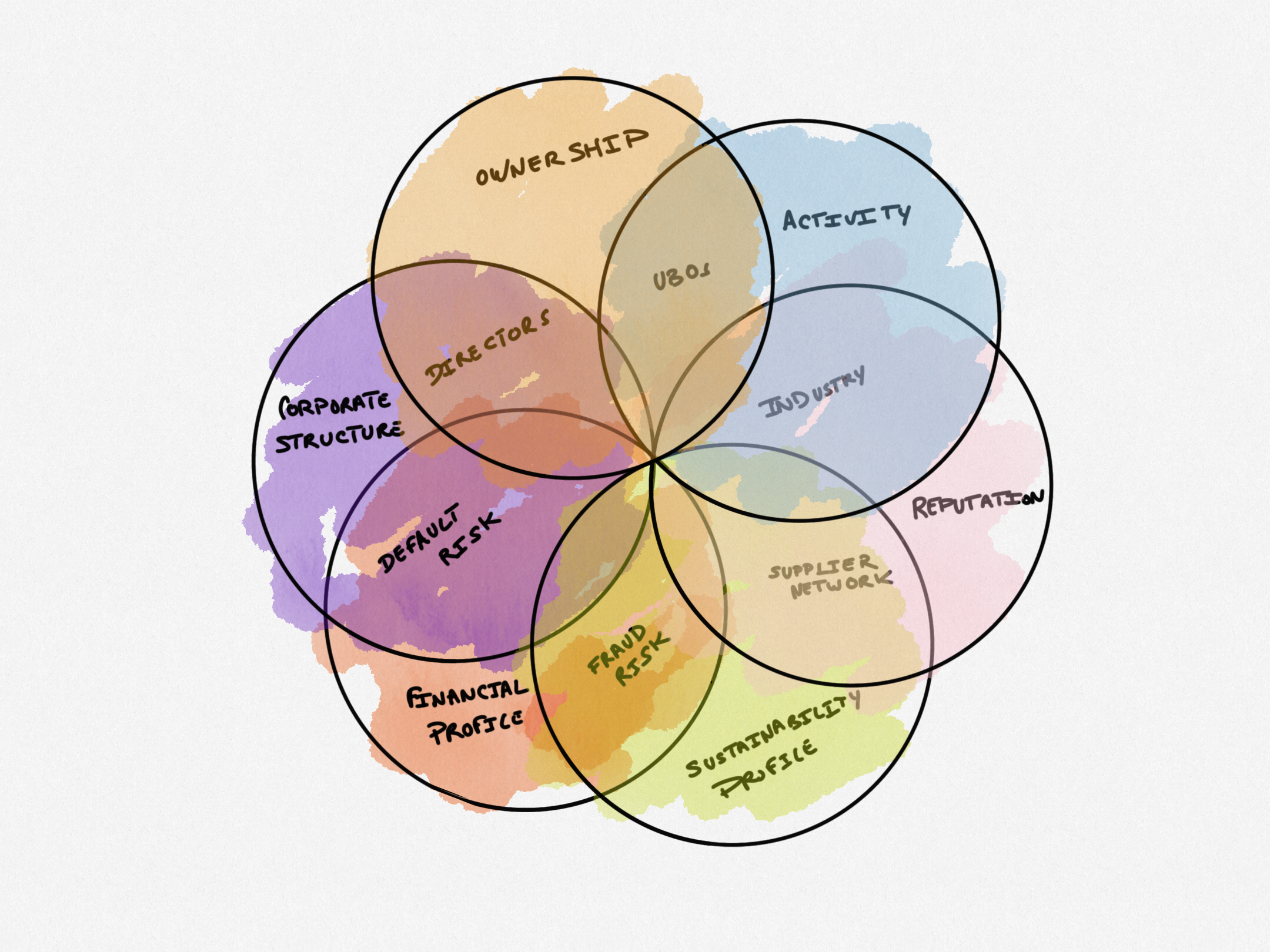Is KYB data or process: the quantum state of business identity

Preamble:
Navigating the maze of compliance, especially when it comes to Know Your Business (KYB) checks, can feel like a headache for many business owners. It's a common gripe: "Why do I have to go through this process again when I've already been cleared by one company?" This question sheds light on the tricky task of understanding business identities and the details of KYB procedures.
Exploring the Essence of Business Identity
Have you ever wondered why each financial institution needs to perform its own KYB? Let's dive into what makes a business a business to get to the bottom of this puzzle.
So, what is a business?
At its core, a business is any entity involved in commercial, industrial, or professional activities. Sounds simple. But it gets more complex once we consider its legal identity.
Defining a legal entity
Businesses have varied forms, each with distinct legal characteristics:
- Multinationals: Large groups with intricate structures and often public ownership.
- Companies: Independent legal entities with distinct rights and responsibilities.
- Non-profits: Mission-driven organizations operating beyond mere profit motives.
- Trusts/Partnerships: Collaborative ventures pooling resources and expertise.
- Independent workers: Individuals, i.e. natural persons with varied legal statuses between countries and often levels of activity
These entities' legal standing and recognition differ across countries, adding to the complexity. The first ISO standard on Entity Legal Forms, ISO20275, was only published in 2017!
“There are 3818 legal types registered in the iso 20275 norm!”
Redefining KYB as a Comprehensive Data Challenge
Understanding a business is like putting together a complex puzzle. We see it as a dynamic data graph, allowing us to filter through various layers important in the KYB assessment.

- Legal and Regulatory Compliance:
- Location of Incorporation: Jurisdictional nuances that dictate legal frameworks.
- Regulatory Adherence: Compliance to sector-specific regulations and global compliance standards.
- Operational Overview:
- Location of Activity: Geographical areas of operation influencing regulatory and market risks.
- Sector of Activity: Industry-specific risks and compliance needs.
- Organizational Structure:
- Ownership Structure: Analysis of the ownership hierarchy to identify control mechanisms.
- Extended Ownership Structure: Investigating beyond immediate ownership to uncover indirect influences and control.
- Ultimate Beneficial Ownership (UBO):
- Beneficial Owner Identification: Unmasking the individuals who ultimately own or control the business.
- Reputation and Reliability:
- Public and Market Perception: Assessing the business's reputation and historical market behavior.
- Litigation and Legal History: Scrutiny of past legal challenges and disputes.
- Sustainability and Social Impact:
- Environmental Impact: Evaluation of the business’s environmental footprint and sustainability practices.
- Social Responsibility: Assessing the company's commitment to social ethics and community impact.
- Financial Health and Stability:
- Financial Records: Analysis of financial statements, credit history, and fiscal stability.
- Transaction Patterns: Scrutinizing transaction behaviors for irregularities or unusual patterns.
- Fraud and Security Risks:
- Fraud Prevention Measures: Evaluating the robustness of internal controls against fraudulent activities.
- Cybersecurity Posture: Assessing defences against cyber threats and data security practices.
Yet, KYB transcends mere data aggregation; it's a dynamic, context-sensitive process.
KYB as a Processd
Collecting data is just the start. The real work is analyzing, validating, and keeping that information fresh and useful throughout the customer lifecycle. KYB is about creating a culture of thorough, ongoing compliance within your business.
For regulators across the world it's increasingly not just ticking boxes—it's evaluating a continuous effort to stay on top of things.

- Proactive and Systematic Action:
- KYB demands proactive management through well-structured systems and processes. These systems must facilitate data collection, analysis, and prompt action.
- It involves developing and maintaining workflows that identify risks and automate compliance checks. This systematic approach ensures consistent scoring and decision-making, reinforcing compliance as an active, ongoing process.
- Perpetual Assessment of KYB:
- Legal entities are ‘evolving objects'. The focus extends beyond the mere accumulation of information. It encompasses a deep understanding, ongoing validation, and regular data updating. This means actively engaging in a continual due diligence process and remaining alert to changes in client profiles, regulatory modifications, and evolving market scenarios.
- Adaptive and Responsive Strategies:
- KYB processes must be agile and adaptable in response to the ever-changing regulatory environment and availability of data sources. This involves seamlessly integrating new regulations and data sources without compromising the business’s core functions.
- Cultivating a Compliance-First Culture:
- The essence of KYB is now rooted in establishing a compliance-first mindset within the organization. Every decision and every action is taken with a keen awareness of its legal and ethical ramifications.
This enhanced view of KYB recognizes that the responsibility of compliance lies not just in possessing information but in the diligent effort put into evaluating, managing, and constantly updating this information.
Conclusion:
Universal KYB data is more of a dream than a reality. Not only is every business unique, requiring a customized approach to KYB, but increasingly, KYB is viewed by regulators as assessing a process quality more than a checking exercise. The challenge is keeping compliance thorough yet manageable, evolving with regulatory changes and leveraging technology to make processes smoother, ensuring compliance supports rather than hinders business growth.


